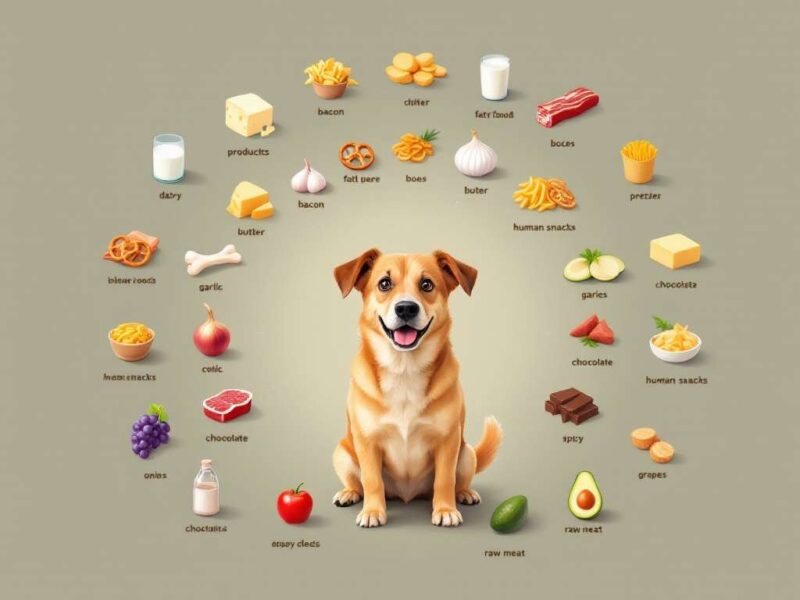When it comes to our beloved furry companions, we all want the best for them, and one crucial aspect of their well-being is their diet. Selecting the right dog food is essential to ensure that our dogs lead healthy, happy lives. With a multitude of options available at pet stores, making the right choice can be overwhelming. This guide aims to help you navigate through the sea of options and make an informed decision about your dog’s nutrition.
Understanding Your Dog’s Nutritional Needs
Just like humans, dogs require a balanced and nutritious diet to thrive. However, their dietary needs are unique, and they may differ based on factors such as age, size, breed, and activity level. Puppies, for instance, need higher levels of protein and calories to support their growth, while senior dogs might require lower-calorie, joint-friendly diets. Consult your veterinarian to gain insight into your dog’s specific nutritional requirements.
Reading the Ingredient List
The first step in choosing the right dog food is to scrutinize the ingredient list. Look for real meat or protein sources listed as the main ingredient, such as chicken, beef, or fish. Avoid foods with vague labels like “meat by-products” or “animal digest,” as these often contain less desirable parts of animals. Additionally, steer clear of foods with excessive fillers like corn, soy, and wheat, which may lead to allergies and digestive issues in some dogs.
Identifying Vital Nutrients
A well-balanced dog food should contain essential nutrients like proteins, carbohydrates, fats, vitamins, and minerals. Proteins are vital for muscle development and repair, while carbohydrates provide energy. Healthy fats, like omega-3 and omega-6 fatty acids, contribute to coat and skin health. Look for foods that contain a range of vitamins (A, B, D, E, and K) and minerals (calcium, phosphorus, zinc, etc.) to support overall wellness.
Considering Special Dietary Needs
If your dog has specific dietary needs due to allergies, sensitivities, or medical conditions, you might need to explore specialized dog food options. Limited-ingredient diets, grain-free formulas, and hypoallergenic options are available to cater to such requirements. If your dog requires a special diet, consult your vet before making any changes.
Avoiding Artificial Additives
Artificial additives like colors, flavors, and preservatives might not be the best for your dog’s health. Some dogs can be sensitive to these additives, leading to skin problems, gastrointestinal issues, or hyperactivity. Opt for dog food brands that use natural ingredients and avoid those with excessive artificial additives.
Choosing Between Wet and Dry Food
Both wet and dry dog food options have their pros and cons. Wet food typically contains more moisture, which can be beneficial for dogs that don’t drink enough water. It can also be easier for older dogs with dental issues to eat. On the other hand, dry food can help keep your dog’s teeth cleaner and is more convenient for storage and feeding. Some dog owners choose to mix both wet and dry food to balance benefits.
Checking for AAFCO Certification
The Association of American Feed Control Officials (AAFCO) sets the standards for complete and balanced pet foods. Look for dog foods that display an AAFCO statement on their packaging, indicating that the food meets the required nutrient profiles for dogs. This certification ensures that the food is formulated to provide the necessary nutrition for your furry friend.
Considering Your Budget
While it’s important not to compromise on the quality of your dog’s food, your budget is also a factor to consider. High-quality dog foods tend to be more expensive, but they often provide better nutrition and can lead to fewer health problems down the line. If your budget is tight, explore different brands and options to find the best balance between quality and affordability.
Reading Reviews and Seeking Recommendations
With so many options available, it can be helpful to read reviews from other dog owners. Look for feedback on factors like taste, palatability, and how the food has affected dogs’ health over time. Additionally, ask your veterinarian and fellow dog owners for recommendations based on their experiences.
Transitioning to a New Food Gradually
Once you’ve selected the right dog food for your furry friend, it’s essential to introduce it gradually. Sudden changes in diet can upset your dog’s stomach and lead to digestive issues. Start by mixing a small amount of the new food with the old food, and gradually increase the proportion of the new food over a week or so.
In Conclusion
Choosing the right dog food for your four-legged companion is a crucial responsibility that directly impacts their health and well-being. By understanding your dog’s specific nutritional needs, reading ingredient lists, considering special requirements, and making informed decisions, you can provide the best possible nutrition for your furry friend. A trip to the pet store armed with this knowledge will enable you to navigate the aisles with confidence, ensuring that your beloved pet gets the nourishment they deserve.


